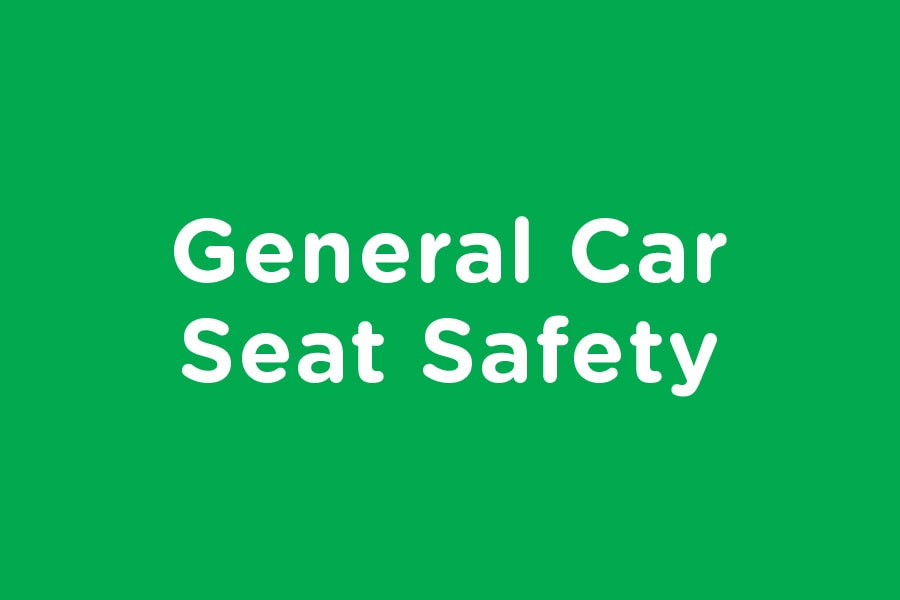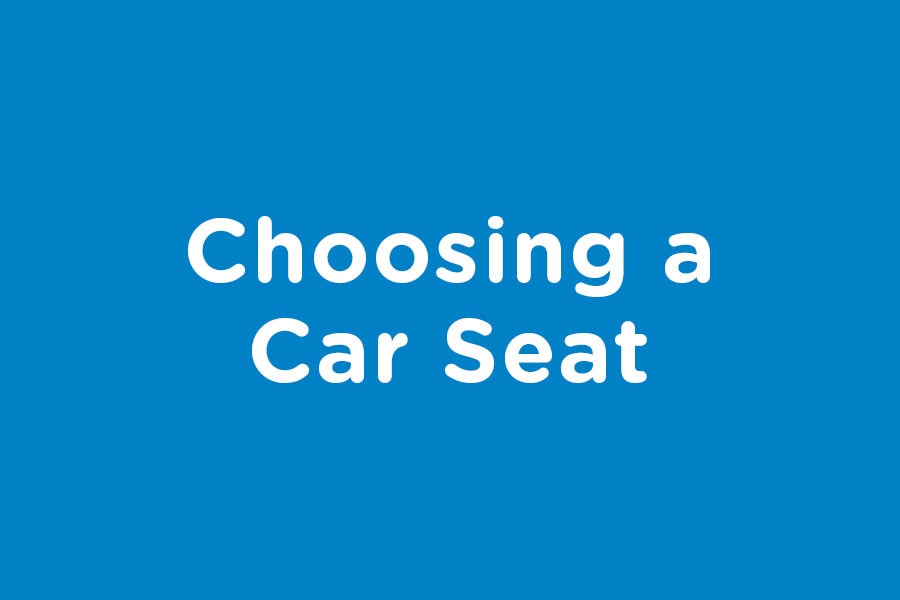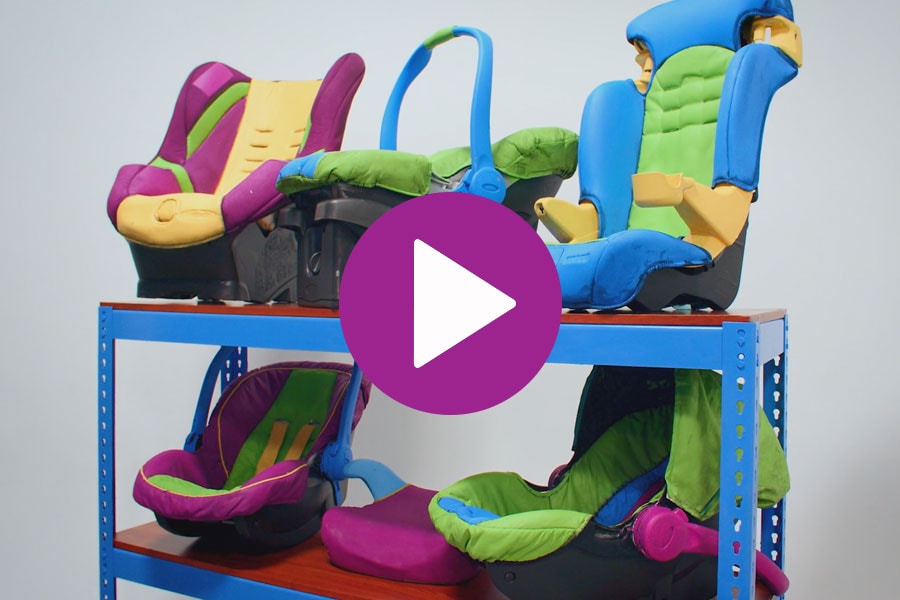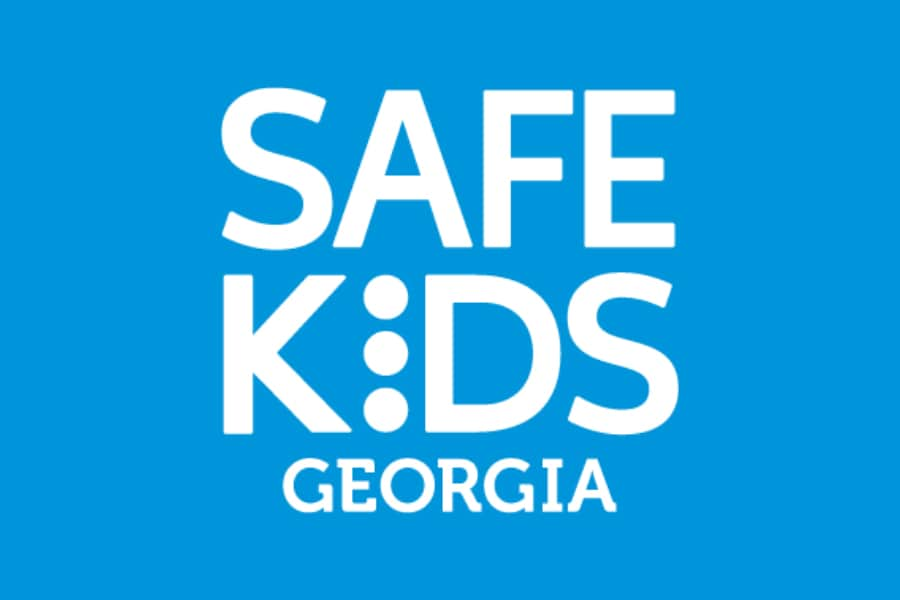Legit or Counterfeit: How to Spot a Fake Car Seat
As a parent or caregiver, you want your child to be safe when riding in the car. That’s why it’s important to research and choose a car seat that meets federal safety regulations.
Unfortunately, experts are seeing more and more counterfeit, or fake, car seats being sold. Because these products don’t meet safety standards, using one can lead to injury or death in a crash. It’s scary to think you may accidentally purchase an unsafe car seat, but don’t worry. Our child passenger safety technicians (CPSTs) explain how to spot a counterfeit and how to find a car seat that is safe to use.
In this article:
What is a counterfeit car seat?
To understand how counterfeit car seats work, it may be helpful to think about a knockoff designer bag. It looks like the real thing, is offered at a lower price and you may even find a color or style not available anywhere else. But give it a closer look and you can tell something’s off.
Counterfeit car seats work the same way. Manufacturers design their car seats to look just like popular brands, like Doona or Evenflo. They offer a lower price or unique color to get you to buy their product instead of a higher-quality one. Even though they look like the real deal, these fake car seats are dangerous and could even be deadly.
Why are counterfeit car seats dangerous?
The U.S. has strict safety regulations that ensure car seats properly restrain your child during a collision. They set standards for the design, materials and installation systems that make up your car seat. Counterfeiters get around U.S. regulations by making their products in other countries. Their car seats are often made of cheaper materials, don’t use a 5-point harness system, and fail in crash tests. These products do not properly secure your child and can break into pieces during a collision.
How to know you’re buying a safe car seat
Trust your gut. If something about an ad, product description, website or label feels weird, don’t click. Whenever possible, shop in-store or go directly to a trusted manufacturer’s website.
Shop trusted brands. U.S. retailers can only sell products that follow federal safety guidelines. Most legitimate manufacturers also have customer support teams staffed by certified child passenger safety technicians (CPSTs) who can help you troubleshoot your car seat over the phone or online. You can find safe products through these trusted resources:
- American Academy of Pediatrics car seat list
- Safe Ride News manufacturer contacts
- National Highway Traffic Safety Administration (NHTSA) safety issues and recall site
- Georgia Governor’s Office of Highway Safety Child Passenger Safety Headquarters
- A local CPST through Safe Kids
Look for mandatory information. The U.S. Federal Motor Vehicle Safety Standard (FMVSS) sets very specific labeling requirements for car seats. The following information must be visible on every car seat:
- Model name or number
- Manufacturer’s name, address and telephone number
- “Manufactured In,” plus the month and year the product was made
- Place of manufacture, including the city and state, or foreign country
- This statement: “This child restraint system conforms to all applicable Federal motor vehicle safety standards.”
- Whether or not a car seat is safe for use on aircraft
- Height and weight requirements
- Who to contact about car seat recalls
All information must be printed in English and Spanish and use proper spelling, grammar and punctuation. Any misspellings or strange sentence structure is a sign of a fake car seat.

How can I tell if a car seat is counterfeit?
Check the product. Several signs will tell you that a car seat is fake. Don’t purchase a product if you see any of these red flags:
- Unknown manufacturer name
- Manufacturer with foreign address
- No customer support number, or a non-U.S. telephone number
- Foreign languages other than a combination of English and Spanish
- Incorrect grammar, spelling or sentence structure
- Foreign compliance labels
- Missing U.S. mandatory information in labels and instruction manuals
- Car seat does not come with a manual
- Car seat does not come with a registration card
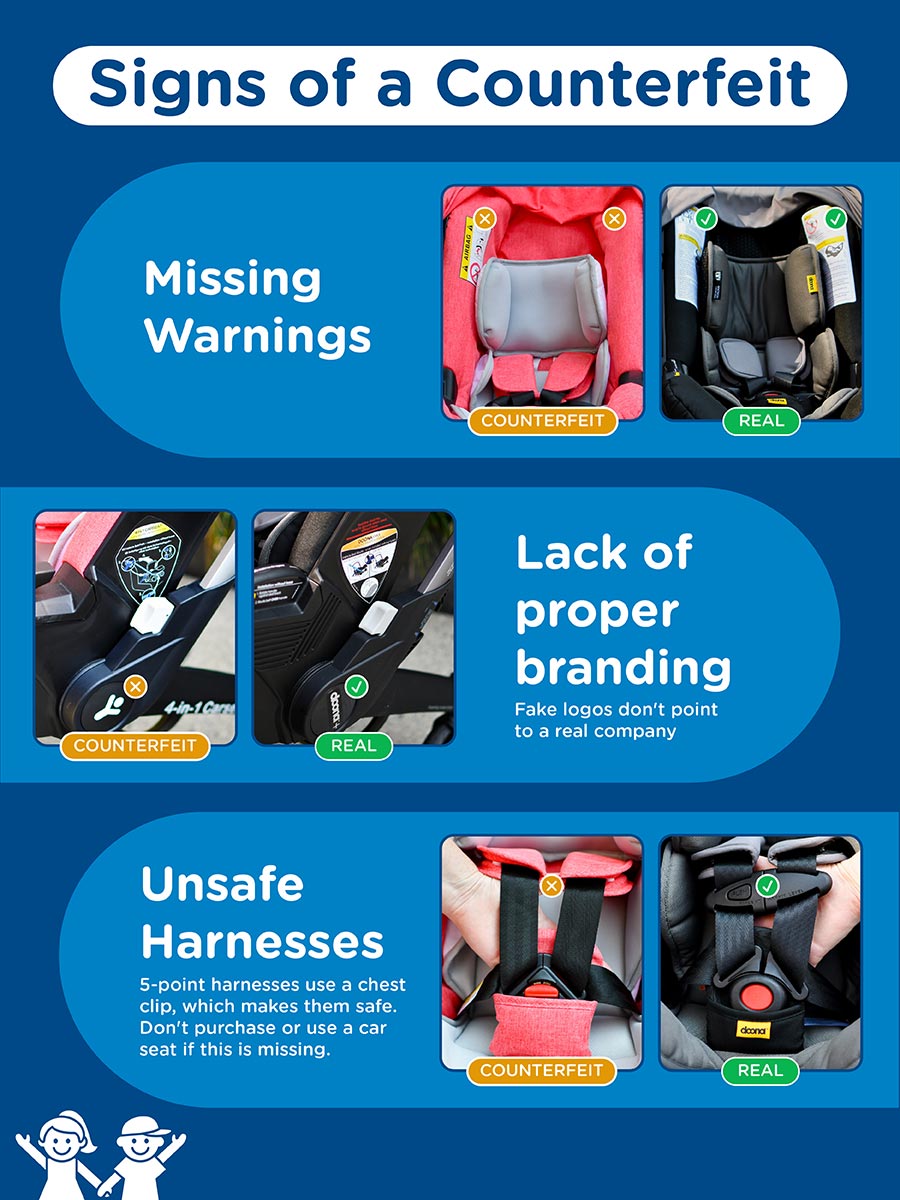
Things to look for when shopping online
Be alert. Always be on the lookout for unfamiliar websites and sellers. If you land on a site you’ve never heard of, see images that are cropped oddly or find products that are not offered on a manufacturer’s own website, there’s a good chance the retailer is selling counterfeit products.
When ordering through a large retailer like Amazon, here are some things to look for:
- Check the seller’s name. Are you on a trusted manufacturer’s page or storefront?
- Make sure the description, images and color options for the car seat match what’s on the original manufacturer’s website.
- Check to make sure the photos and links load properly. If they don’t, make your purchase somewhere else.
Report knockoff car seats. Most retailers are working hard to remove these seats from their sites, but they need your help to find them. If you spot a counterfeit car seat online, or think you may have purchased one, report it to the retailer.
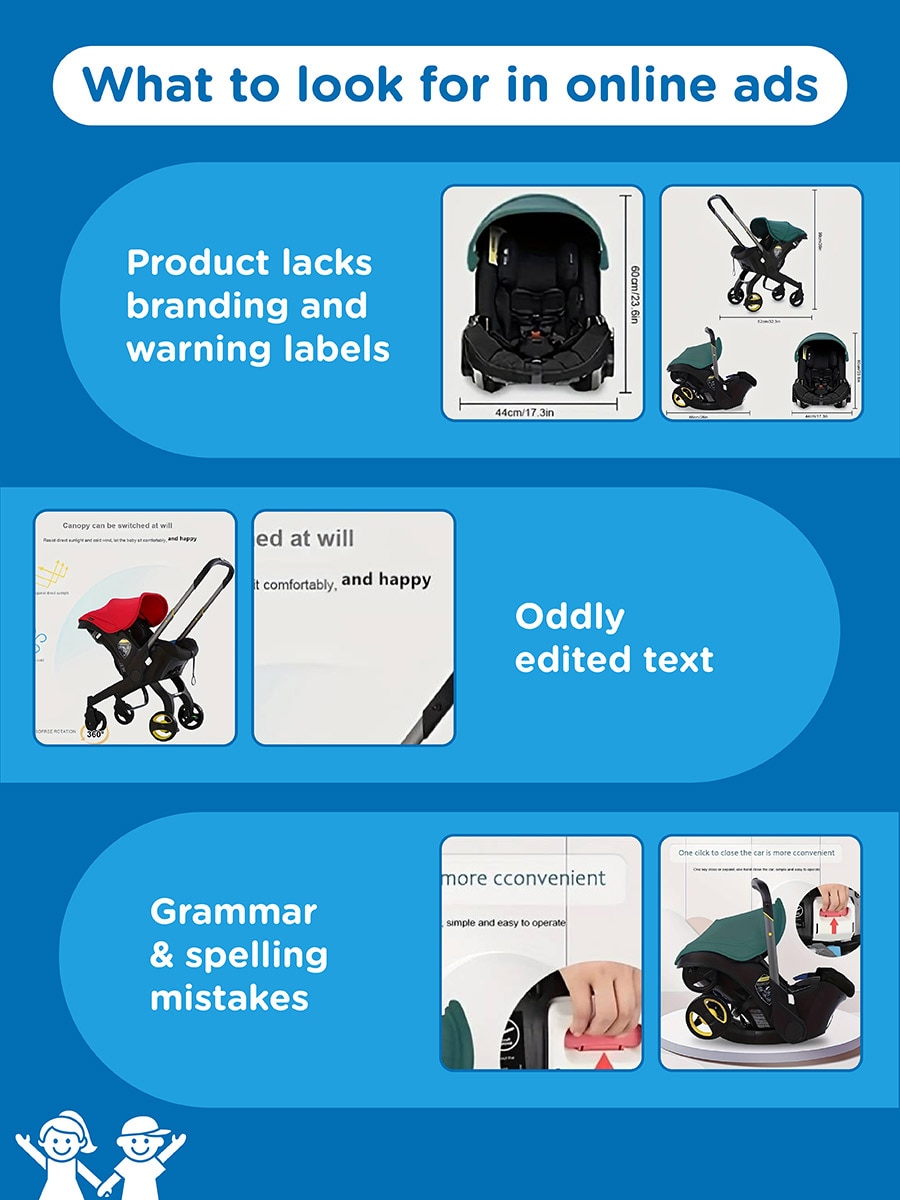
What should I do if I bought a counterfeit car seat?
The most important thing to remember is that counterfeit car seats are not safe and should be swapped out for a U.S. regulated model as soon as possible.
Once you’ve replaced the car seat, you can report the counterfeit to NHSTA and/or the Consumer Product Safety Commission (CPSC).
We understand that a car seat is a big investment, and purchasing a replacement may be frustrating. There may be assistance programs in your area. To learn more, contact a local CPST. As a certified car seat expert, they can help you identify a safe model and make sure it’s installed and working properly.
